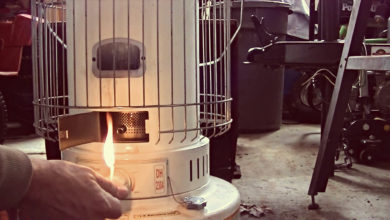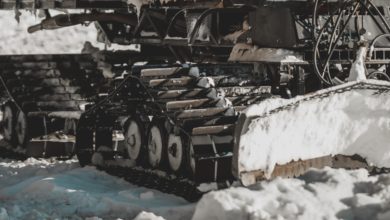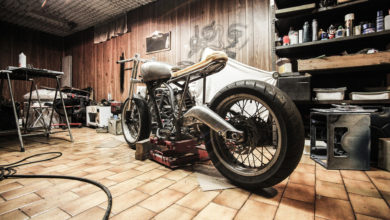With all the talk about alternative sources of energy, is it possible for me to get energy from compost? This is an interesting question that we will look at in some details. First, what exactly is compost?
What Is Compost?
In its simplest form, compost is just decayed organic matter. Organic matter, on the other hand, refers to anything that can be naturally broken down such as leaves, vegetables, left-over food, kitchen waste, dead organisms (plants or animals) and practically any naturally occurring thing you can think of.
When all these are put together to be acted upon by micro-organisms that break them down, the result is called compost.
Now back to our question, can energy be created from compost? The answer is yes! To understand this, we must first look at how compost is formed. Compost is formed through a process known as decomposition.
Decomposition
Decomposition is the process by which micro-organisms act on organic waste, breaking them down to tiny components. During this process, there are two by-products that are released and these are heat and biogas.
Both of the by-products from this decomposition process are energy sources if they can be gotten in sufficient quantities. Let’s look at how these two by-products can be used as energy sources.
Heat
We’ve already stated that during the decomposition process, heat is released. In fact, it is a known fact that bales of straw have been known to self-ignite as a result of the heat generated when some part of the bale of straw gets wet and begins to decompose.
The heat generated during this decomposition process can get strong enough to start a fire. This has resulted in many barns getting burnt down.
If this heat is somehow captured and stored or channeled, it can be used for direct heating or for generation of electricity using thermoelectric modules.
Biogas
This is a much more popular way through which energy is derived from compost, especially for small-scale uses. During the decomposition process, gases are also released and among these gases released is methane.
Methane as a by-product of decomposition is one of the cleanest forms of fuel. Now, this gas is highly flammable and can, therefore, be used to power generators that will produce electricity.
A Practical Guide For Generating Electricity From Compost
We’ve looked at the possibility of creating energy from compost. Now we want to look at some practical examples of how this is done.
Example 1
This method involves the use of waste from farm livestock and a very large quantity of it too. First, the right environment has to be created to hold the waste for decomposition. The right environment will be an environment that lets in as little an amount of oxygen as possible.
This enclosure should be long, narrow and have two openings at the two ends. These two openings will be used to load new organic materials and to remove fully decayed ones. It may also have hatches on the top which will give access to the inside of the enclosure. This enclosure can actually be something like a tank made of concrete.
Now, methane is lighter than air and will always rise to the top so a pipe should be attached to the top of this enclosure or tank for collecting the methane gas to wherever you will be storing it. With the enclosure ready, the next step is to begin to fill it with organic waste.
Fill the enclosure with as much animal waste as you can get. Do this daily to have a good supply and to ensure constant delivery of the gas. As new organic waste is added, the older waste decomposes, releasing methane.
After a while, the older organic waste will have totally decomposed. These should be taken out to create room for fresh waste. This means that as you are loading fresh waste from one end of the enclosure, you will be offloading expired waste from the second end of the enclosure.
As methane is released, it passes through the pipe at the top of the tank and goes into your collection point. The collected gas can then be used to power a generator to supply electricity or any other gas-powered machine you may want to use it for.
Example 2
This second practical method is called the Jean Pain Method after the French inventor of the method. What he invented is referred to as a bio-energy system and comprises the use of both by-products of composting – heat and biogas.
In this bio-energy system based on composting, the supposed aim is to harvest the methane released as a by-product of the process. However, during the process that breaks down the organic waste releasing methane, so much heat is generated (about 140°F or 60°C) and this gets quite hot even for the organisms doing the breaking down.
To enhance the methane production, Pain formulated a way of cooling the system or container housing the compost. He designed water carrying pipes that ran all around the system, acting as a cooling agent. To cool the container, the water carrying pipes had to absorb the heat which led to the water in the pipes getting heated up.
Now, the water that has now been heated was then channeled into the house and used for domestic hot water needs and heating of the house. On the other hand, methane was also generated and stored for powering generators and other gas-powered machines.
In Jean Pain’s setup, he was able to heat a 100 meter squared 5 room house and also provide its occupants with hot water for about 6 months with about 5 tons of waste. With 12 tons of waste, he was able to keep up the supply of heat and hot water for 18 months.
Conclusion
While the processes and organic waste requirement described above may not be something that everyone can achieve, the primary question of if it is possible to create energy from compost has been fully answered.
Currently, biogas is being harvested in commercial quantities from some waste sites. Hopefully, this practice will be more widely practiced as this will not only clean up the environment but also provide clean energy to supplement our fast depleting energy sources.





